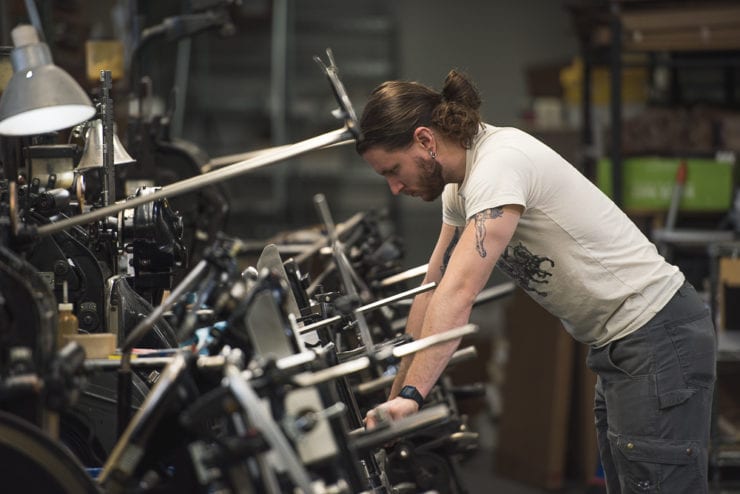
You’re ready to get something printed, but unless you have been in the printing business, the wide array of choice for the exact printing type you want or need can be confusing. However, the type of printing you choose can have a significant impact on how satisfied you are with the project once it’s complete, so knowing the basics about your choices is very important.
The Nine Primary Printing Techniques
There are actually nine printing techniques that are commonly used when creating printed materials, but only three of them are really commonly used in commercial printing. The three most common include:
- Letterpress
- Offset lithography
- Screen printing
The other six, which are not used as often include:
- Engraving (high-end stationary)
- Thermography (raised printing)
- Reprographics (copying and duplicating)
- Flexography (packaging for labels or boxes)
- Gravure (large orders of publications like catalogs)
- Digital printing (in its early days right now, but increasing in popularity)
When to Use Screen Printing and Offset Lithography
Offset (lithography) printing is a method that uses a large print roller to apply ink to a cylinder than transfer it to large rubber blankets and eventually to the paper. This method is fast, and often less expensive than letterpress, so it’s commonly used for mass printing like books, magazines, cheaper stationery, and posters. It produces a quality image and is the least expensive method available for high-volume printing but will be sub-standard compared to letterpress.
Screen printing uses mesh to transfer printed ink to the top of the material except in the areas where a stencil design obstructs the ink transfer. For multi-color prints, it’s transferred one shade at a time. Since screen printing can be used on many materials, it’s a popular choice for clothing, billboards, banners, wood, metal, electronics, and ceramics.
Benefits of Letterpress
Letterpress was the method used in the very first Gutenberg Press, back in the 15th century when movable type was a new thing. More than five centuries later it’s still the predominant printing technique. Letterpress uses a surface with elevated letters that is pressed into the printing material so the ink migrates from the metal or wood letters to the paper. In the early days each letter had to be placed by hand, which was laborious and time-consuming. Today letterpress is a method used for producing high-quality printed materials at high speeds, but it must be done by someone with the knowledge to adjust for fluctuations in cuts, engravings, and thickness. The result is printed material with superior workmanship and fine typography, and the finished work will reflect the quality.
Letterpress can create a unique and timeless look for printed materials that include wedding invitations, announcements, business cards, personal and business stationary, thank you cards, greeting cards, invitations and more.
